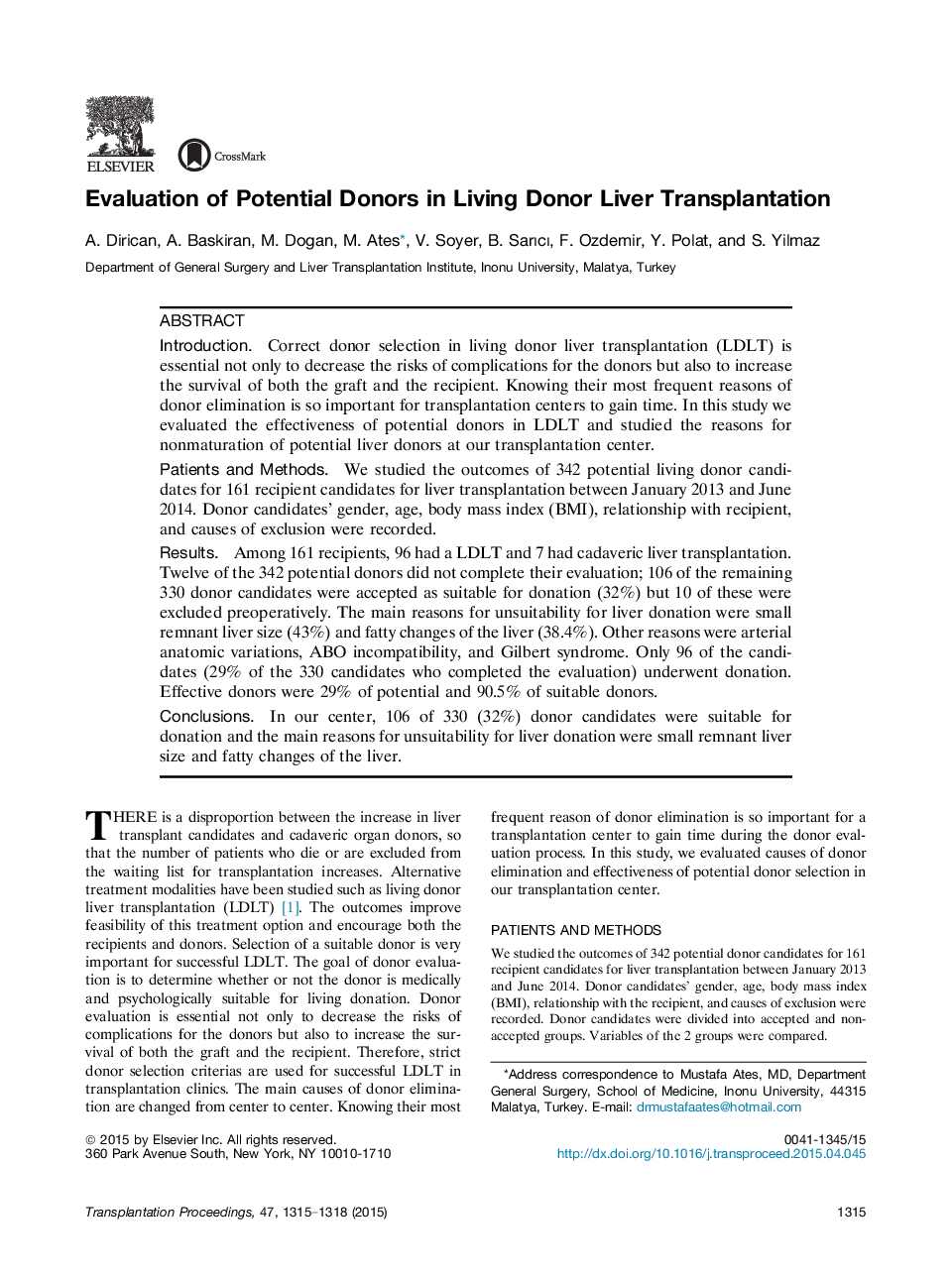| Article ID | Journal | Published Year | Pages | File Type |
|---|---|---|---|---|
| 4257369 | Transplantation Proceedings | 2015 | 4 Pages |
IntroductionCorrect donor selection in living donor liver transplantation (LDLT) is essential not only to decrease the risks of complications for the donors but also to increase the survival of both the graft and the recipient. Knowing their most frequent reasons of donor elimination is so important for transplantation centers to gain time. In this study we evaluated the effectiveness of potential donors in LDLT and studied the reasons for nonmaturation of potential liver donors at our transplantation center.Patients and MethodsWe studied the outcomes of 342 potential living donor candidates for 161 recipient candidates for liver transplantation between January 2013 and June 2014. Donor candidates' gender, age, body mass index (BMI), relationship with recipient, and causes of exclusion were recorded.ResultsAmong 161 recipients, 96 had a LDLT and 7 had cadaveric liver transplantation. Twelve of the 342 potential donors did not complete their evaluation; 106 of the remaining 330 donor candidates were accepted as suitable for donation (32%) but 10 of these were excluded preoperatively. The main reasons for unsuitability for liver donation were small remnant liver size (43%) and fatty changes of the liver (38.4%). Other reasons were arterial anatomic variations, ABO incompatibility, and Gilbert syndrome. Only 96 of the candidates (29% of the 330 candidates who completed the evaluation) underwent donation. Effective donors were 29% of potential and 90.5% of suitable donors.ConclusionsIn our center, 106 of 330 (32%) donor candidates were suitable for donation and the main reasons for unsuitability for liver donation were small remnant liver size and fatty changes of the liver.
